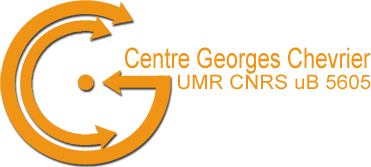THE PROGECT : LE ROCK PROGRESSIF ET LA RECHERCHE
The audience is listening
- Écrit par Eduardo Saluena
0 0 1 446 2545 MSR, FAHS 21 5 2986 14.0 96 800x600 Normal 0 false false false EN-GB JA X-NONE /* Style Definitions */ table.MsoNormalTable {mso-style-name:"Table Normal"; mso-tstyle-rowband-size:0; mso-tstyle-colband-size:0; mso-style-noshow:yes; mso-style-priority:99; mso-style-parent:""; mso-padding-alt:0mm 5.4pt 0mm 5.4pt; mso-para-margin:0mm; mso-para-margin-bottom:.0001pt; mso-pagination:widow-orphan; font-size:10.0pt; font-family:Calibri;}
THE AUDIENCE IS LISTENING: PROGRESSIVE ROCK AND NEW WAYS OF RECEPTION by Eduardo Saluena
Attending to a new culture based on globalization, music has been continuously redefining itself in terms of production and consumption. This last element is a very determinant force not only in the level of successful of a music genre, but in music formats and the way of listening, or the relationships between musicians and their audience. In the case of progressive rock, a new and younger audience coexists today with those generations who grew up listening to the classic bands of the genre. In both profiles there are different motivations created by the music industry, supporting a conflict between modernity and nostalgia that is articulated by some bands from the 90’s scene like Spock’s Beard or The Flower Kings; there are also more complex discourses connected with Macan’s post-progressive roots. One of the finest examples of this is John Zorn’s universe, which blends fans from jazz & improvisation, avant-garde, metal, Hebrew traditional music and, of course, progressive rock.
In recent decades, The Internet has provided a wide circuit of distribution and information, linking up people from different parts of the world. Due to this situation, different meanings are continuously built around music genres and their reception. Progressive rock is not an exception, evidencing these new practices thru the articulation of new ways of specialized dissemination that involves a kind of “do-it-yourself” attitude:
- Labels that cover new groups and reissues of classic albums with detailed booklets and bonus-tracks often recovered from old recordings. At the same time, these labels can be specialized in different sub-genres.
- Websites with a very exhaustive work of compilation and classification. Derived from fanzines and mail-order catalogues, one of the most extended models is the database built by a fan community. Name and members of the band, album title and track list, sub-genre, year of release and a rating are the most common entries; a review can be included, often written by not professional critics that use to include detailed descriptions; other more interactive models are newsletters or forums, where musicians, promoters and music lovers can share the same Web platform.
- Festivals that favor successful returns of progressive rock acts from the 70s, usually performing their classic albums, and occasionally with new compositions. Most festivals combine bands from different generations, trying to build a new profile of audience, supported by a revival spirit but modeled with a more open-minded perspective.
So today, attending to this continuous update of the genre, we can’t understand progressive rock without this entire infrastructure that has reinforced a very specific audience in the music industry. This is connected with the discussion about the sense of a past regression and the search for a progression to the future.
Eduardo G. Salueña








